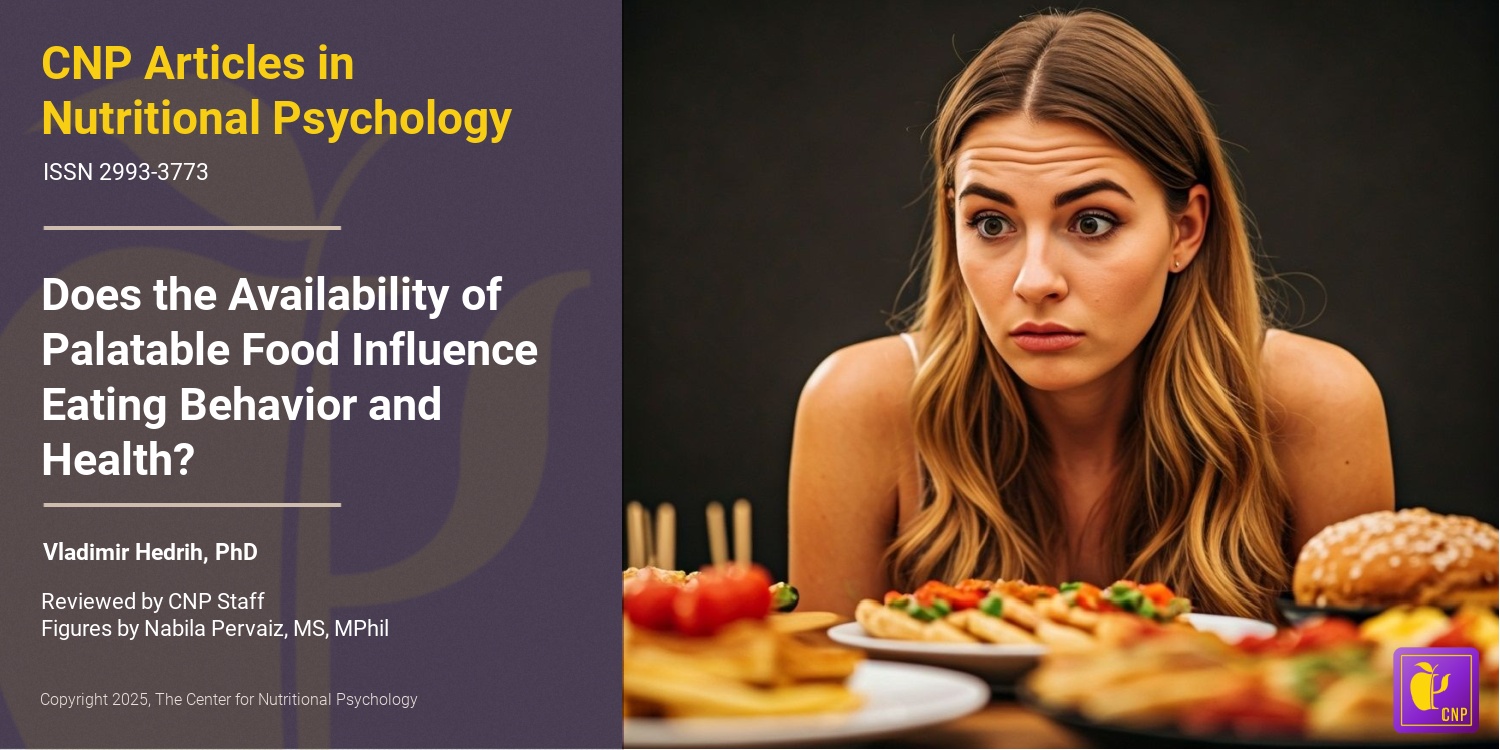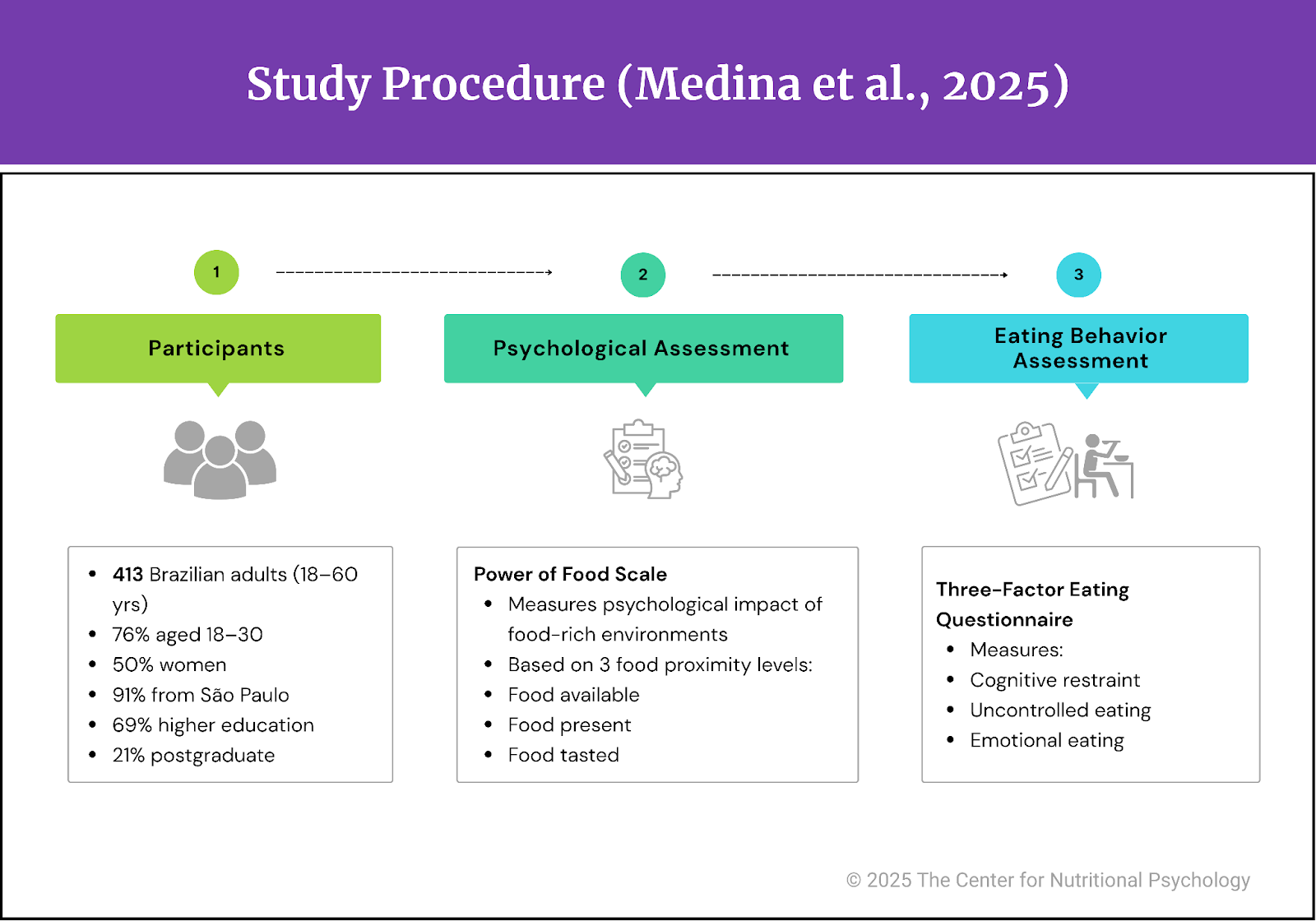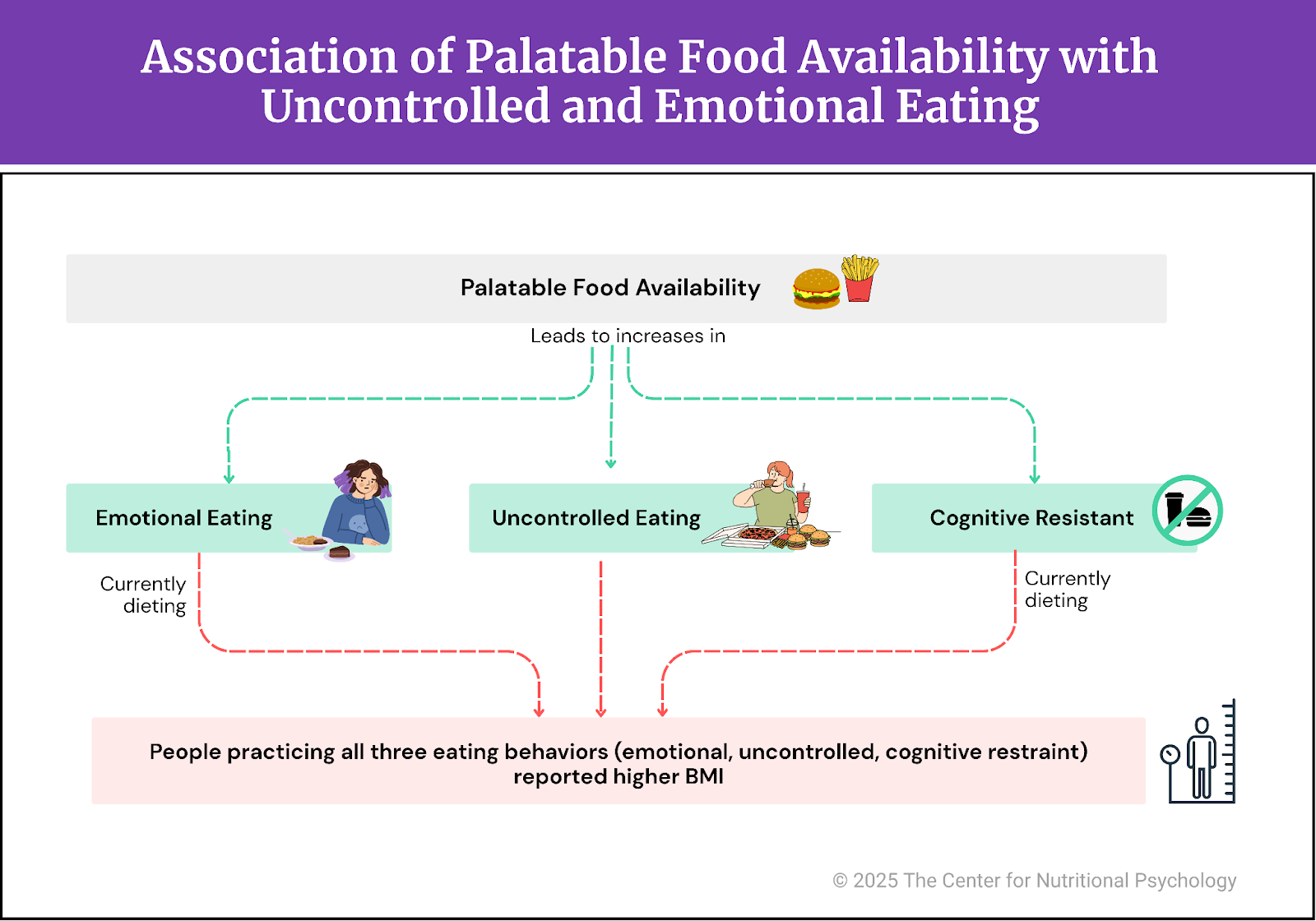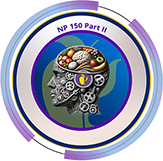Does the Availability of Palatable Food Influence Eating Behavior and Health?

Listen to this Article
- A study published in Foods examined the relationship between the availability of palatable food and three aspects of eating behavior —cognitive restraint, uncontrolled eating, and emotional eating.
- Where palatable foods were widely available, people were more prone to uncontrolled eating and emotional eating
- Individuals currently on a diet exhibited higher levels of cognitive restraint and emotional eating.
Although people have different food preferences, they cannot always act on them. An important limitation is often availability – no matter how much we want certain food, we can eat it only if it is available to us. If the food we want is not available, we usually settle for foods that are, even though they are not our first choice.
What affects our food choices?
Our food choices are influenced by a combination of biological factors (such as hunger, taste preferences, and nutritional needs), psychological and social influences (including mood, habits, culture, and peer pressure), and environmental factors (including availability, cost, advertising, and time). Our cultural background and upbringing have a significant influence on our long-term food preferences and habits. They can influence our preferences for or aversions to certain foods. Similarly, humans can use food choice as an expression of their values, attitudes, and identity (Hedrih, 2023; Jayasinghe et al., 2025).
Studies suggest that we learn to interpret sensations coming from our body as signals of hunger and how to respond to them. Moreover, humans (as well as animals) can learn to expect food at specific locations and at certain times. We can even learn to expect a certain number of meals per day and what their contents will be (Hedrih, 2023; Isherwood et al., 2023).
Humans (as well as animals) can learn to expect food at specific locations and at certain times.
Two processes of hunger
Some authors propose that there are two different processes responsible for hunger and thus two different processes that motivate us to eat. One of those processes is homeostatic hunger. A lack of specific nutrients in the body triggers specific signals, resulting in the sensation of hunger. This experience then motivates the person to seek and eat foods containing the nutrients the body needs.
The second process of hunger is called appetite. It arises from the learned associations between various cues for food and their consequences. For example, a person may remember how eating a chocolate cake resulted in a pleasant experience coming from the taste of the cake. Because of this, when the person sees a chocolate cake again, he/she will expect the same pleasant experience from eating it, which will increase that person’s motivation to eat the cake (Hedrih, 2023).
However, the learned associations need not be only with taste. People may learn that choosing and eating certain foods can communicate endorsement of certain values, prestige, or even contribute to their overall health and well-being. This can make the person choose or avoid specific food items, regardless of their taste (Folwarczny et al., 2024).
The current study
Study author Natália d’Ottaviano Medina and her colleagues sought to investigate the relationship between the availability of palatable food in one’s environment and three aspects of eating behavior: cognitive restraint, uncontrolled eating, and emotional eating (Medina et al., 2023). These authors believed that these aspects of eating behaviors would be associated with how rich a person’s environment is in palatable foods and whether the person is dieting. They also believed that individuals practicing these behaviors more often would have a higher body mass index.
Restrained eating, uncontrolled eating, and emotional eating
Cognitive restraint, also known as restrained eating, refers to the conscious restriction of food intake to control body weight or shape, often by deliberately limiting calories or avoiding specific foods. Although people practice restrained eating with the aim of reducing their food intake, previous studies suggest that this approach can actually increase food cravings and hunger, ultimately leading to overeating later (Dicker-Oren et al., 2022).
Uncontrolled eating is the tendency to eat excessively in response to external cues or emotions, often without awareness or the ability to stop despite feeling full. Emotional eating is a behavior in which individuals eat in response to their emotions rather than to satisfy physical hunger. It involves using food as a means of coping with or soothing emotional distress, such as stress, sadness, or anxiety (Encyclopedia of Nutritional Psychology, 2025).
Study design
Study participants were 413 adults between 18 and 60 years of age. 76% of them were between 18 and 30 years old. 50% of them were women. They were all Brazilian, and 91% of them were from São Paulo. 69% of them completed or engaged in higher education, and 21% in postgraduate programs.
They completed the Power of Food Scale, a self-report questionnaire intended to measure the psychological impact of living in food-rich environments. It considers changes in participants’ appetitive responses based on three levels of proximity to food (food available, food present, and food tasted). Participants also completed the Three-Factor Eating Questionnaire, designed to assess the three previously mentioned aspects of eating behavior (see Figure 1).

Figure 1. Study procedure (Medina et al., 2025)
Where palatable foods were widely available, people were more prone to engage in emotional and uncontrolled eating
Results showed that the presence and availability of palatable foods were associated with higher levels of uncontrolled eating and emotional eating. Individuals who reported palatable foods as more available tended to report higher levels of cognitive restraint.
Those who reported practicing all three types of eating behaviors more tended to have a higher body mass index. Additionally, individuals who reported currently dieting were more prone to engaging in both cognitive restraint and emotional eating (see Figure 2).

Figure 2. Association of palatable food availability with uncontrolled and emotional eating
Conclusion
The results of this study suggest that the presence of food and its general availability are important determinants of eating behavior, particularly in cases of uncontrolled and emotional eating. Additionally, the results confirmed the link between dieting and a higher proneness to emotional eating.
Health protection strategies should consider the impact of people’s food environment when designing interventions to prevent and manage eating behavior impairments.
This suggests that health protection strategies should consider the impact of people’s food environment when designing interventions to prevent and manage eating behavior impairments. They should also take into account the vulnerability of individuals practicing restrictive diets to emotional eating.
The paper “The Psychological Impact of the Widespread Availability of Palatable Foods Predicts Uncontrolled and Emotional Eating in Adults” was authored by Natália d’Ottaviano Medina, Joana Pereira de Carvalho-Ferreira, Julia Beghini, and Diogo Thimoteo da Cunha.
References
Dicker-Oren, S. D., Gelkopf, M., & Greene, T. (2022). The dynamic network associations of food craving, restrained eating, hunger and negative emotions. Appetite, 175(March), 106019. https://doi.org/10.1016/j.appet.2022.106019
Encyclopedia of Nutritional Psychology. (2025). The Center for Nutritional Psychology. https://www.nutritional-psychology.org/encyclopedia/
Folwarczny, M., Menon, R. G. V., & Otterbring, T. (2024). Plate, glass, and social class: How dominance and prestige orientation shape food preferences. Personality and Individual Differences, 225, 112666. https://doi.org/10.1016/j.paid.2024.112666
Hedrih, V. (2023). Are Hunger Cues Learned in Childhood? CNP Articles in Nutritional Psychology. https://www.nutritional-psychology.org/are-hunger-cues-learned-in-childhood/
Isherwood, C. M., van der Veen, D. R., Hassanin, H., Skene, D. J., & Johnston, J. D. (2023). Human glucose rhythms and subjective hunger anticipate meal timing. Current Biology, 33(7), 1321-1326.e3. https://doi.org/10.1016/j.cub.2023.02.005
Jayasinghe, S., Byrne, N. M., & Hills, A. P. (2025). Cultural influences on dietary choices. Progress in Cardiovascular Diseases, In press, S0033062025000209. https://doi.org/10.1016/j.pcad.2025.02.003
Medina, N. d’Ottaviano, De Carvalho-Ferreira, J. P., Beghini, J., & Da Cunha, D. T. (2023). The Psychological Impact of the Widespread Availability of Palatable Foods Predicts Uncontrolled and Emotional Eating in Adults. Foods, 13(1), 52. https://doi.org/10.3390/foods13010052
 Navigation
Navigation











Leave a comment